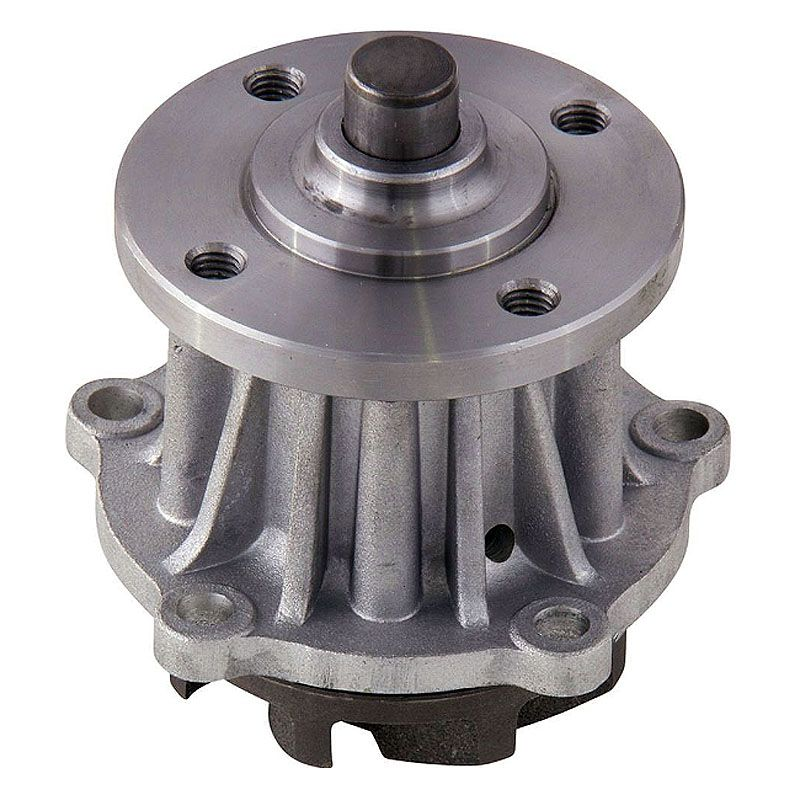Process measures for producing high-strength gray cast iron parts: In recent years, many units have studied and developed high-strength gray iron production methods that are suitable for specific production conditions and different casting requirements (including thin-walled high-strength gray iron castings). In summary, there are four types.
- Strengthening inoculated cast iron:
Add more scrap steel to the charge, use high-quality foundry coke to obtain molten iron with a furnace temperature greater than 1500℃ and high carbon equivalent, and use high-efficiency inoculating agents to strengthen inoculation to obtain high-strength gray cast iron. In the past, the production of inoculated cast iron relied on adding more scrap steel and reducing the carbon content to increase strength, but this method has poor process performance and a large tendency to white cast iron, especially for thin-walled castings (minimum wall thickness 3~10mm). Modern high-strength inoculated cast iron does not use this method, but relies on high-efficiency inoculating agents to strengthen inoculation and improve performance. The general method is: carbon equivalent is about 3.9~4.1%, temperature is about 1480℃, less oxidation of molten iron is required, and high-efficiency inoculants such as Si-Ca, Cr-Si-Ca, Re-Ca-Ba, Si-Ca, Si-Fe composite, rare earth composite, etc. are used for inoculant treatment. - Synthetic cast iron
The so-called synthetic cast iron process is to use induction furnace smelting, use more than 50% scrap steel in the furnace charge, and the rest is recycled iron and iron chips, and obtain molten iron after carbonization treatment. The advantages of this method are: (1) The furnace uses a large amount of scrap steel instead of pig iron, which reduces the cost of cast iron; (2) Low-phosphorus molten iron can be obtained, reducing the impact of phosphorus on shrinkage and leakage defects of thin-walled high-strength gray iron such as cylinder blocks and cylinder heads; (3) It can avoid the genetic influence of pig iron, cast iron has good graphite morphology, high pearlite content, good mechanical properties, and at the same equivalent, the strength can be improved by 1~2 grades compared with cupola cast iron. The use of synthetic cast iron technology to melt high-strength gray cast iron to produce cylinder bodies has achieved very good results. The production results show that: (1) The cylinder bodies cast using the synthetic cast iron smelting process have high mechanical properties. When the carbon equivalent is 4.0%, the tensile strength is greater than 250MPa, which is one grade higher than that of cupola smelting; (2) The cross-section sensitivity of the molten iron is small, and the hardness distribution of the cylinder body cross-sections with different thicknesses and the cross-sections of the stepped test blocks is uniform; (3) The cast iron has a low phosphorus content and contains few impurities, which overcomes the leakage defects of the castings; (4) The cost is low; (5) The smelting process is simple and easy to operate and easy to master. - Low-alloyed inoculated cast iron
The chemical composition of the original molten iron is adjusted to achieve a higher carbon equivalent, and a small amount of alloying elements such as chromium, copper, and molybdenum are added in the furnace (or ladle) to obtain high-temperature low-alloyed molten iron. After inoculation treatment, a structure with fine graphite, high pearlite content, and small interlamellar spacing is obtained, thereby obtaining high-strength cast iron. This method is widely used abroad to produce high-strength gray cast iron, and the effect is relatively stable. The alloying elements are mostly Cu, Cr, Mo, Ni, etc. Its biggest advantage is that the matrix structure of the thin-walled part of the cylinder block and cylinder head can obtain more than 95% pearlite, and the hardness difference is small. Some units use 0.3~0.7%Cr, instantaneous inoculation, and control the chromium/silicon ratio to solve the production problems of the cylinder block and cylinder head. - Adjust the conventional chemical composition and proportion of cast iron to obtain high-strength, low-stress gray cast iron.
When the carbon equivalent remains unchanged, appropriately increasing the Si/C ratio is one of the important ways to improve the strength and rigidity of machine tool castings. By adjusting the chemical composition, especially changing the silicon/carbon ratio, so that Si/C is 0.5~0.9, and adding appropriate inoculation and alloying, high-strength gray cast iron parts with good comprehensive performance can be obtained. The rules about the silicon/carbon ratio are: (1) Under the same carbon equivalent, the higher the Si/C ratio, the higher the tensile strength can be, the higher the relative strength, the lower the relative hardness, and the better the elastic properties; (2) Under the same carbon equivalent, the higher the Si/C ratio, the lower the residual stress and the smaller the stress tendency; (3) Increasing the Si/C ratio reduces the tendency to chilling and reduces the cross-section sensitivity, while having no effect on the fluidity of molten iron and linear shrinkage. Adjust the manganese and silicon content so that the Mn content is 0.2~1.3% higher than the Si content to obtain another high-strength and low-stress cast iron. The Mn content of gray cast iron is in the range of 1.5~3.0%. Increasing the Mn content, especially when the Mn content is greater than the Si content, can significantly refine the eutectic and make it easier to obtain D and E type graphite and fine pearlite matrix. In addition, by controlling the difference between Mn and Si and the absolute value of Mn in the gray cast iron, so that the difference between Mn and Si is between 0 and 0.5%, and Mn is greater than 2%, different types of hardening phases can be obtained in the gray cast iron. Therefore, by controlling the difference between Mn and Si and the absolute value of Mn, high-strength gray cast iron with high mechanical properties, uniform hardness, good pressure resistance, compactness and wear resistance can be obtained. This high-manganese gray casting is produced in Zhengzhou Textile Machinery Factory and some factories in the three industries of machine tools, cylinder liners and hydraulic parts, and has achieved good results. Mn=1.7S+0.3% (to ensure that sulfur is completely combined with manganese).







